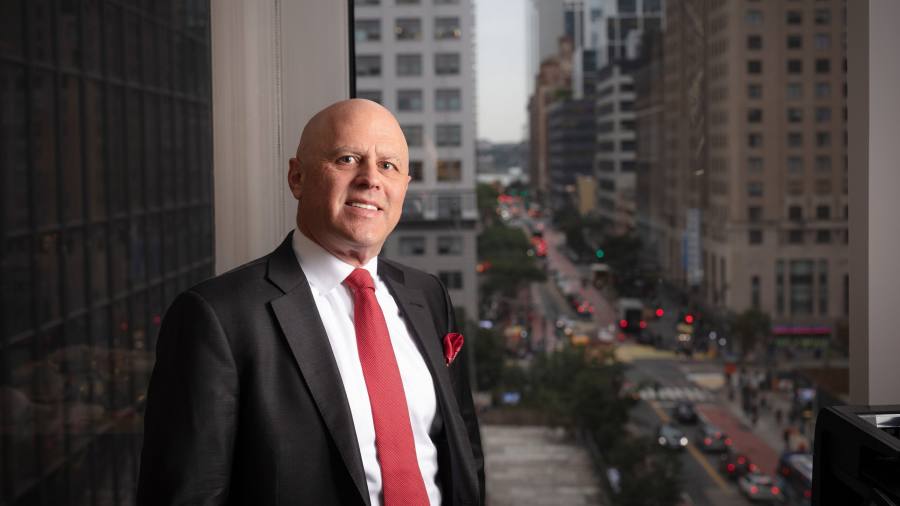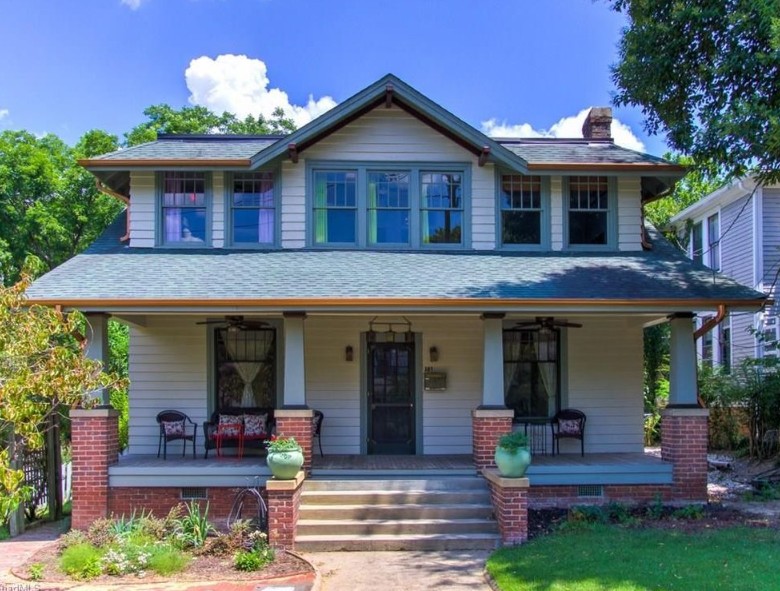Wealthy buyers turn cautious on luxury home loans

Jeffrey Feinman, New York accountant to the super-rich, in February arranged an unusual mortgage for a client buying a home abroad. Exceptionally for today’s mortgage market, the loan covered 100 per cent of the value of the home. It also came fixed at 3.25 per cent, comfortably better than the 3.9 per cent average for a 30-year fixed-rate mortgage in the US at the time. But the really striking thing was its size: $110mn.
While the world’s richest people could buy even the priciest homes for cash, the majority will — just like the rest of us — use a mortgage. That is where the similarities end, however. Home financing for the wealthy draws on an international web of advisers, including private bankers, accountants and lawyers. In this world, a high-value home is just another piece of collateral, enabling borrowing that frees up other cash to be sent round the world in pursuit of the highest investment return and lowest tax rate.
It is an approach they are still taking — but now much more cautiously — in a world of rising interest rates where the prospect of an economic downturn looms. Feinman says that, in February the typical mortgage he arranged for clients had a loan-to-value (LTV) ratio of about 90 per cent. Today, it is between 50 and 60 per cent. “This is partly about lending rates but also about the stock market outlook. Plus, banks’ lending appetites have reduced and there is drastically more scrutiny on borrowers,” he says.
Mark Davies, a London-based tax adviser, agrees. “It’s definitely more difficult from a supply point of view. On the demand side, there’s a greater hesitancy, for sure,” he says.
The broader economic outlook is a key consideration when it comes to choices about mortgages which, for many wealthy people, are a simple arbitrage between the cost of borrowing and expected investment returns. “If you think you can get better returns in an equity portfolio or by putting the money into your own business, why would you tie the money up in property?” says Melissa Cohn, a New York-based broker for William Raveis Mortgage.


When UK mainstream mortgage rates jumped last month, a consequence of the financial markets’ reaction to £45bn in unfunded tax cuts, super-rich borrowers saw their rates rise, too. “I have never been as busy as that week fielding enquiries from clients,” says Paul Welch, a broker who runs largemortgageloans.com. He estimates that his clients have about £1bn worth of mortgages coming up for renewal over the next three months. “Large mortgage offers were withdrawn and rates shot up. It was horrendous.” Cohn says events in the UK even had a knock-on effect in the US. “We are seeing rates rising and lenders getting tougher on underwriting,” she observes.
Charlie Hoffman, London-based head of the team that manages HSBC bank’s richest private clients, notes that “as interest rates rise, the gap for arbitrage might [narrow] and clients may think twice”. But the arbitrage between borrowing costs and investment returns is not the only benefit conferred by supersized mortgages — they can also bring tax savings. For example, for the UK’s 62,900 resident non-domiciled individuals only money brought into the country is subject to UK tax. A large mortgage for a UK home purchase can be secured against money or assets held offshore, thus saving tax on money that would otherwise have to be brought into the country to pay for the home. And for those domiciled in the UK, borrowing also reduces the inheritance tax bill for their estate should they die, as the tax is not levied on the mortgaged portion of a home.
In the US, interest payments on home loans can often be offset against investment income on a taxpayer’s annual return. Feinman says that most of his clients recover roughly half of the interest paid on such loans in this way.
So, even if there is less appetite for them currently, supersized mortgages look here to stay. Roarie Scarisbrick, a London buying agent, says the majority of high-value homes are bought with a mortgage of some kind. “Everybody says they are cash buyers, but it’s extraordinarily rare to see them actually go through and buy with cash,” he says.
The identities of those involved in the priciest home sales — let alone how they are financed — are kept under wraps, but sometimes details seep out. In 2019, a $94mn mansion in Bel Air, Los Angeles, was bought via a company using $58mn of debt. In 2017, The LA Times reported, celebrity couple Jay-Z and Beyoncé bought an LA home for $88mn, using $53mn of debt.
Typically, buyers agree a high-value home purchase by evidencing their ability to pay for it, such as via a large balance of highly liquid investments. They may sell some of these to make the first payment when contracts are exchanged. They will then raise finance to pay the seller on the completion date in part or in full with borrowed money.
The loan products, LTVs and rates vary considerably. “Currently, the best rates from private banks are a full percentage point better than the worst for a comparable mortgage,” says Cohn. In early September, Welch says he arranged a £28mn mortgage for a UK-based client, fixed at 1.5 per cent over the UK base rate, secured against a £28mn house in Knightsbridge, London, and £5.6mn of other assets.
Private banks have always prided themselves on their tolerance for clients’ exotic financial arrangements — catering for those with low-value incomes but high-value assets, or a wide array of non-employment income from several countries. Often, they serve rich clients working in private equity or property, where income can be infrequent and in huge sums, as and when investments mature.

This flexibility can come at a price, since private banks with fewer depositors often lend at higher rates than high street banks. “But, if a bank really wants a client, there is really no limit to how low it will go,” says Welch. The $110mn mortgage Feinman arranged in February also involved shifting his client’s other assets — between $500mn and $600mn, most of it in liquid securities — to a new bank.
Welch says high street banks have become an important source of higher-value mortgages in recent years. In August, the best rate he could find for a UK home was from Sweden’s Handelsbanken, which offered a 2.99 per cent rate fixed for five years, at up to 75 per cent LTV with no maximum loan specified. However, Hoffman says that really large loans — like the £100mn mortgage he arranged for a customer last year — are the preserve of a clutch of the world’s leading private banks.
Providing additional collateral besides the home helps to secure a loan at a higher LTV and, often, a better rate. “No bank will give you a 100 per cent loan unless it can see you have other liquid assets although, in some cases, it may not actually need to hold these as collateral,” says Welch.
Blended facilities, which combine the property with additional collateral assets, are becoming more popular, say bankers. All 100 per cent loans arranged by Feinman and Cohn, and most done by Welch, have required additional collateral, they say. “In the vast majority of cases, our lending against a trophy home [alone] is capped at 50 per cent LTV,” says Hoffman.
Recently, Cohn negotiated a $25mn loan at 75 per cent LTV for a New York home purchase with no collateral. “The client had $35mn in liquid net worth, but it was a push to get [the lender] to go up that high on the LTV,” she says.
Banks are tight-lipped about how much they will lend super-rich clients against non-property assets. The capital a bank must hold against a loan is inversely linked to the liquidity of the collateral. A rough guide, according to a Monaco-based banker at a leading European private bank, is to lend between 95 and 75 per cent of the value of sovereign bonds, depending on how creditworthy the government is; or about 60 per cent for the largest, most liquid stocks. Diversification helps too: a broad portfolio of equities and bonds commands a higher LTV than a highly concentrated one.
While, in theory, banks will accept anything as collateral, the current outlook for interest rates, increasing inflation, and prospects for the global economy are making them more cautious. “Two years ago, you heard the argument from banks that fine art was a legitimate part of asset allocation,” recalls Feinman, who says back then he could arrange a high-value loan for an art dealer with relative ease. “Now, it’s totally different. There is a lot less discretion for private bankers in what they can lend against.”
Often banks use their global network to source a loan in another country where borrowing rates are cheaper. Welch had three banks ready to offer his client £28mn to fund the Knightsbridge purchase: he says all three had European subsidiaries and would have been able to fund themselves in euros. The European Central Bank rate was then 0.5 per cent, compared with the Bank of England’s 1.75 per cent.
But clients eyeing cross-currency loans should consider the risk. Sterling’s value has roughly halved against the dollar since 2007, meaning big losses for anyone financing a London home purchase with a dollar mortgage over the period. “If you’re buying a ski chalet in the French Alps or a home on the Riviera, then it might be sensible to take out a euro loan. But [borrowing across currencies] you can get too cute,” says Hoffman.

However, risk appears to be the last thing on the mind of those eyeing up New York’s most expensive homes, which are bucking a wider market slowdown. In the three months to the end of August, 46 homes in New York sold for more than $10mn, up from 31 in the same period before the pandemic in 2019, according to Serhant, a New York estate agent. Across the market as a whole, sales over the period fell from 5,872 to 4,773.
At least some of the prospective buyers circling properties such as the penthouse at Central Park Tower, billed as the tallest residential building in the world, will be keeping a hotline open with their bankers. The home was listed in September for $250mn, far above the $101mn record sale price in New York so far this year. With US interest rates to climb, bidders are likely to be bargaining as hard for their mortgage as for the home itself.
This article is part of FT Wealth, a section providing in-depth coverage of philanthropy, entrepreneurs, family offices, as well as alternative and impact investment








